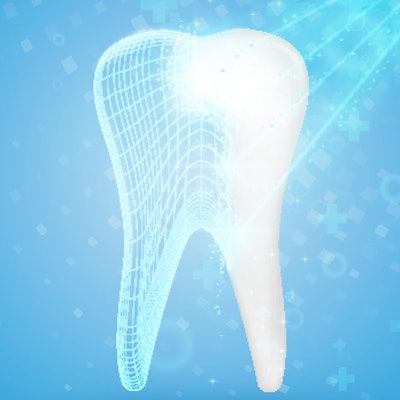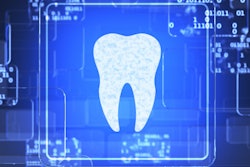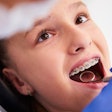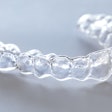
Bioactivity is an "exciting advance in restorative dentistry during the last 20 years," according to Dr. John Comisi, an associate professor of restorative dentistry at the Medical University of South Carolina's James B. Edwards College of Dental Medicine.
That's because using bioactive or "bioavailable" materials, as Comisi refers to these products, can help teeth with caries heal when they are restored.
"We must remember the tooth is a living structure," he said. "It's not an inert rock. It can defend itself against the onslaught of decay and demineralization if we provide the building blocks for a remineralization process to occur."
The basics of bioactivity
Bioactivity started off as a marketing term, according to Comisi and other dentists. But the word has expanded to refer to the use of different materials to restrengthen, remineralize, or reform tissues that have been destroyed in the tooth or the surrounding periodontal tissue, noted Dr. Stephen Abrams of Cliffcrest Dental Office in Toronto.
 Dr. John Comisi of the Medical University of South Carolina.
Dr. John Comisi of the Medical University of South Carolina.There is no standard for bioactivity, but the types of substances often used with it are fluoride, calcium, phosphate, and antimicrobials. When used alone or in combination, these substances not only help teeth with caries recover but also ward off future caries. This is particularly important for composites, which are more prone to cavities than amalgams.
"Bioactivity is an effort to try to make composites better to fight that," said Dr. Jeremy Horst, PhD, director of clinical innovation at CareQuest Innovation Partners.
That "fight" helps the composite as well as supports neighboring teeth. As Abrams pointed out, patients don't just develop one carious lesion.
"If there is a carious lesion on a proximal surface, then it is the perfect environment to also develop a lesion on the neighboring tooth," he said. "If one finds one large lesion in a patient's dentition, then most likely there are other lesions developing as well."
To Abrams, a good treatment plan is one that not only involves the restoration or treatment of the large lesion but also prevents the development of other lesions going forward.
"Bioactive/remineralizing products will be part of this solution," he said.
 Dr. Jeremy Horst, PhD, of CareQuest Innovation Partners.
Dr. Jeremy Horst, PhD, of CareQuest Innovation Partners.Abrams is also quick to point out that bioactivity is not a magic bullet. It's only one material and technique to keep the mouth clean.
"I look at the entire human being and begin to wonder what I can tell each patient to make sure they don't have another dental problem," he said. "How do we get the patient engaged in this process? What type of materials should be used?"
The materials matter and scientific evidence shows regular composites just aren't up to snuff. Demineralized dentin and exposed pulp tissue use the ions in bioactive materials to create a hydroxyapatitelike formation that helps the remineralization process, Comisi explained.
"That's what is so exciting," he said. "Traditional composites do not enable this to occur."
Bioactive favorites for caries
Not all bioactive materials are created equal. In the interviews, experts repeatedly pointed to two materials: glass ionomer and silver diamine fluoride (SDF).
"A threshold that our group has figured out by looking at clinical trial recurrent caries outcomes and laboratory fluoride release data is that if a material is 80% or more glass ionomer and 20% or less plastic, it seems to have the caries preventive activity we're all looking for," Horst said.
 Dr. Jeanette MacLean of Affiliated Children's Dental Specialists.
Dr. Jeanette MacLean of Affiliated Children's Dental Specialists.It should also be noted that research on both glass ionomers and SDF isn't new -- it goes back decades, according to Dr. Jeanette MacLean, owner of Affiliated Children's Dental Specialists in Arizona.
"Bonding in the '80s and '90s pushed glass ionomer to the side, but in Europe and Asia it's been used and improved," she said. "Glass ionomer from 1970 is not the same as from 2021. The thinking was glass ionomers weren't aesthetic enough or durable enough, but that's not true."
SDF also has a long history, MacLean noted. It was used in the 1850s, in fact, but then pushed aside when dentistry favored fluoride.
"When we discovered fluoride, it was 'forget silver nitrate,' but fluoride has its shortcomings too," MacLean said. "We can use both with silver diamine fluoride. There are trends and shifts, and sometimes we forget about things."
Buyer beware
The biggest trouble with bioactivity is there's no regulation around it, all interviewees said.
"There is a need for the dental industry to be careful with overuse of the term 'bioactive' in promoting their products," Comisi said. "It has become a 'buzzword' and is losing value in the use of this terminology. Understanding the true bioavailability of a product is critical. Every company has the 'latest and greatest,' but when I look at these items, I want to be shown how and why it's 'the greatest.' "
 Dr. Stephen Abrams of Cliffcrest Dental Office.
Dr. Stephen Abrams of Cliffcrest Dental Office.Abrams agreed and said, "We need to begin to critically analyze material that's being provided. A company may say it has the latest and greatest bioactive material to reform enamel, but tell me how it works, tell me how it's been validated, and are there any clinical trials showing that it worked over time."
"My biggest concern is that companies are making promises they can't keep," MacLean added. "Do your due diligence and don't just blindly follow marketing. Make sure companies can substantiate their marketing claims. Look at the literature available."
Doing so will prevent dentists from purchasing the equivalent of "snake oil," according to Horst.
"We need some recognition that it's easy to introduce a new material and register it with the [U.S. Food and Drug Administration], and not do anything to prove it is what it says it is," he said. "Most advertising claims don't mean anything and aren't reviewed by anyone."
As Comisi said, "Look for the long-term clinical evaluations to know that you are providing the best materials for your patient. After all, you don't want to use a poor material that can 'come back and bite you.' "



















